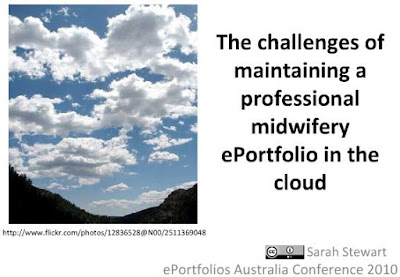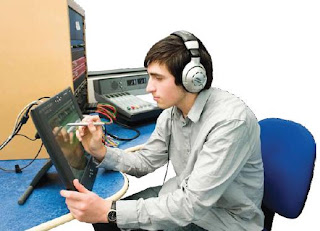 A great Victorian evangelical preacher, Brownlow North, wrote powerfully about the great spiritual divide between worldliness and Christianity. However moving his collection of sermons might be, it prompts me to think that we have a similar social, cultural and economic divide between, generally, two groups:
A great Victorian evangelical preacher, Brownlow North, wrote powerfully about the great spiritual divide between worldliness and Christianity. However moving his collection of sermons might be, it prompts me to think that we have a similar social, cultural and economic divide between, generally, two groups:On the one hand are the 'youngsters' those under 30 who are generally ICT literate. Some might not think of themselves as technologically aware but they have access to all the trappings of modern society. Youngsters rarely wear a watch - instead they have a multi-function 'smart-phone'. They use all the modern digital appliances in the kitchen or lounge including a range of entertainment devices. If there are children or students in the home there will inevitably be a computer with internet access. The family car will have its sat-nav and all the modern creature-comforts digitally controlled. At school or at work, they use computers every day. They buy both goods and services on-line and represent themselves through websites or some form of blog or social software and have free access to learning, self-development and CPD. They have adopted a 'learning mindset'. They can generally be described as 'autonomous learners'.
On the other hand, there is a group of 'oldies' who are benefiting from various government and local initiatives to get on-line, to start learning how to 'catch up' with the so-called digital natives. They have the time and support, they have memories and expertises which need to be captured and shared. Homes for the elderly are fitted with all the latest safety and security gadgets, residents are supplied with personal alarms and even pace-makers. In their visits to hospital they are increasing surrounded by astoundingly expensive X-ray machines and body scanners. Increasingly we find in homes for the elderly all the latest digital equipment, computers and large-screen projectors. Care staff are encouraged to provide interesting activities for the elderly, infirm or those who have some form of disability. In general they are getting personal and appropriate support according to their needs.
But, there is a GULF FIXED for those who fall between these two groups. This intermediate group is composed generally of those who are in work, 'looking for work' or caring for children but with little chance of self improvement. At this time of economic crisis they are insecure and with little ability or awareness of how to bridge the gap - to start learning by themselves or to get the support that they need. The UK has often been called 'a nation of shopkeepers' - yes small businesses where people are working hard, but standing still. They work 'noses-to-the-grindstone' and are not aware of how others are looking after themselves. CPD is an unknown word in their vocabulary. Many of these people fall into the 'Level 1, Level 2 categories' as described by Leitch. Smaller companies do not have 'Human Resource Departments', they do not have HR managers. Their employees are not able to 'bootstrap' themselves into being more able workers. Many do not have Trades Union support or belong to Professional Associations. In terms of self-improvement, they are trapped in a 'gulf of inability'.
At a recent meeting in the North East of some 80+ senior leaders and education managers organised by NIACE this problem really struck home to me. It is this massive group of unsupported workers that need the targetted help of organisations such as NIACE. Of the several strong and clear messages that came out of this meeting was the whole concept of Partnership. Not of many small partnerships, for instance, of a local employer and a local school or college. Not even of a local district uniting a consortium of employers, schools and colleges. What we need is the BIG PICTURE of a locality (or region?) as big as the North East where all providers of learning, all careers services and employers become one large partnership. Such a group would need to show a lot of respect for each other, all around one 'round table'.
But how does the above Big Partnership help those trapped in the Gulf between autonomous learners and those benefitting from personal support. I believe that, with the benefits of on-line information services, the available skills and training needs can be plotted for a whole region; that larger organisations, with their staff development expertise, should be providing 'open house' to those smaller companies who, as described above, do not have such facilities for their personnel. Such consortia or partnerships are working well in the Netherlands, so why not here?
Adult education is therefore at a cross-roads. It can continue to provide 'more-of-the-same' to a dispirited workforce and dispirited employers. Or, Adult Education can pull together a Partnership of both the wider range of expertise(s?) within separate organisations, pull together a broader range of learners, pull together a wider range of training organisations and actually get to grips with the challenges laid down by Leitch so many years ago. Colleges, in particular, need to understand something of 'The Joy of e-Learning' as described by Eva de Lera several years ago. Learners, 'trapped at the grindstone', need to be supported by employers who can see that their companies will become more productive, loyal and retentive by upskilling their workers.
Obviously organisations such as NIACE should be in the vanguard of promoting Partnerships which not only enhance current provision but also they must address the wishlist of Leitch and 'get to the parts that others cannot reach' ie, those who are trapped in this gulf of inability.
But why have I gone to the trouble of describing this scenario in such detail? It is simply that I believe that the ePortfolio is the perfect low-cost tool which will enable this underclass of potential learners to share their achievments with others, to have access to personal mentoring and discover and communicate their self-worth.
There is no reason why mobility of labour should be available only to the upper echelons of society. Autonomous learning should be free to all. And it is the ePortfolio that can make this happen.





























